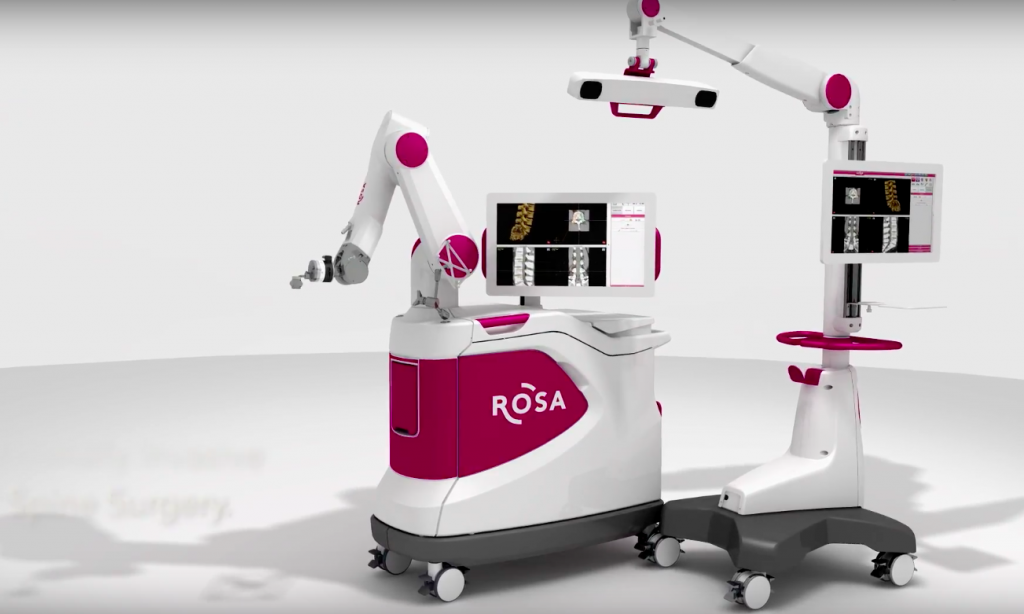Using a 3D printed model, French surgeons have performed the world’s first robot guided minimally invasive surgery on a scoliosis-affected child’s spine. Dr. François Deroussen, Prof. Richard Gouron, and Dr. Michel Lefranc together with anaesthetists from Amiens-Picardie University Hospital performed the operation with the help of Med Tech’s ROSA robot to align and guide the the surgeons.
To prepare the procedure, and be as accurate as possible, the surgeons trained for the surgery on a 3D printed model of the patient. Using this model, the surgeons were able to perfect the timing of the surgery, and procedural practice for working with the ROSA robot.

A world’s first simulation
In an interview, Gouron stated that the operation was both “a first in simulation, and a first in the surgical installation of sacroilliac (lower spine to pelvis) screws using a robot.”
While spinal models have already been developed and 3D printed as an aid for surgeons, this is the first time an entire 3D printed model of a patient’s body, simulating skin, muscle and bone to scale has that been recreated.
The child was initially scanned to determine the positioning of his bones when on the operating table. A 3D reconstruction of his chest cavity was then exported to a printer, and then integrated with a reconstruction of his spine. The model was printed by SimUsanté, a training center attached to the hospital.

A world’s first procedure
One of the most complex parts of an already delicate procedure was placing the sacroilliac screws and for the hooks along which the rods could be attached to straighten out the back. The 7mm screws had to be placed into a bone corridor 8mm wide, leaving no room for imprecision.
To keep the surgery minimally invasive, incisions were made along the back using the model as a guide, where the robot then drilled into the bone. Thanks to the preparations made using the 3D printed model, the rods were pre-aligned in the correct position.
Au CHU d’Amiens, la démonstration de l’opération au bloc de SimUsanté… pic.twitter.com/NouUqLPqQ0
— Rivallain (@grivallain) October 9, 2017
A trailblazing operation
Gouron noted that the operation was a success, stating that “the incisions are smaller thanks to the robot, there is less postoperative pain, and the possibility for the patient to sit”.
Robots and 3D printed components are also being used in minimally invasive and complex dental operations, under the close supervision of surgeons and anaesthetists.
For the latest on 3D printed medical applications, subscribe to our free 3D Printing Industry Newsletter, Follow us on Twitter, and like us on Facebook.
Featured image shows surgeons operating on a model. Photo via Actu.Orange.fr.

